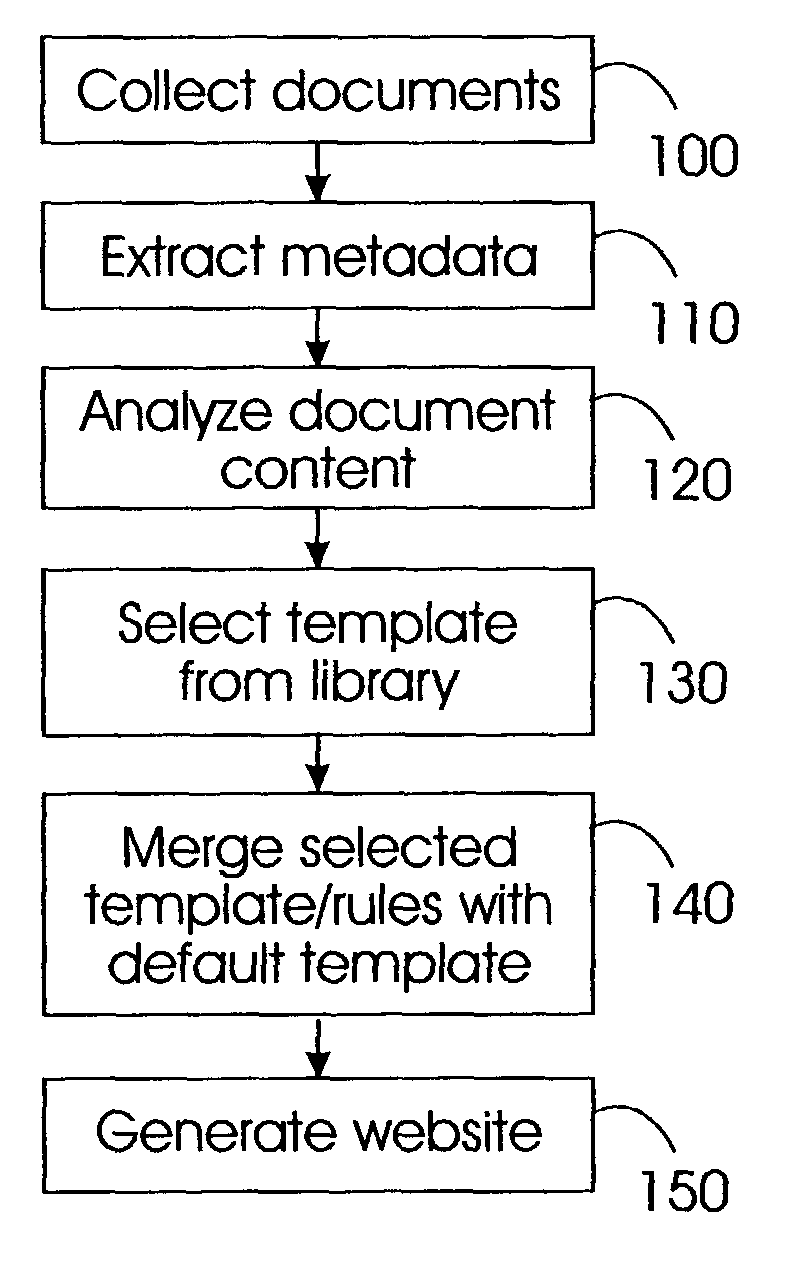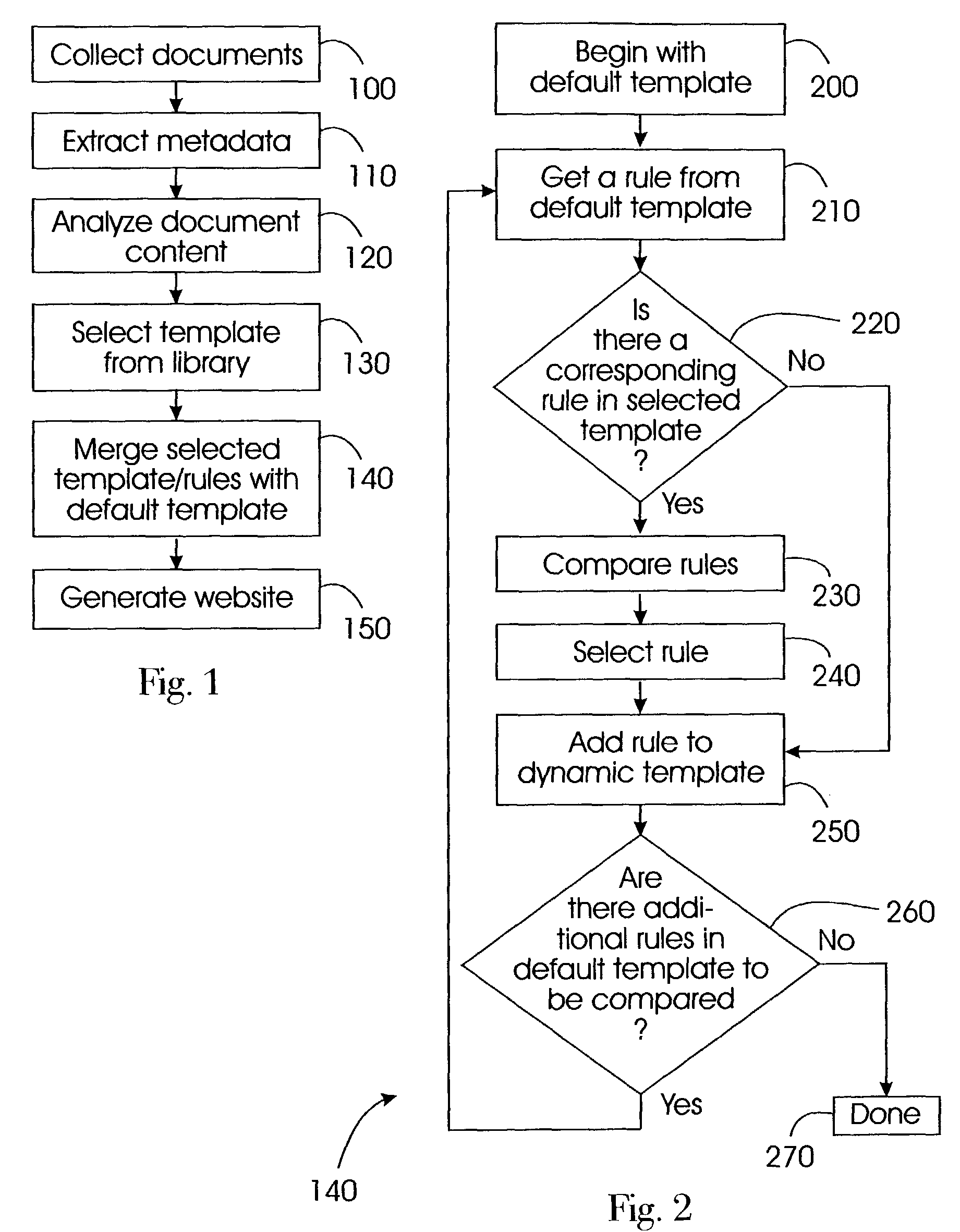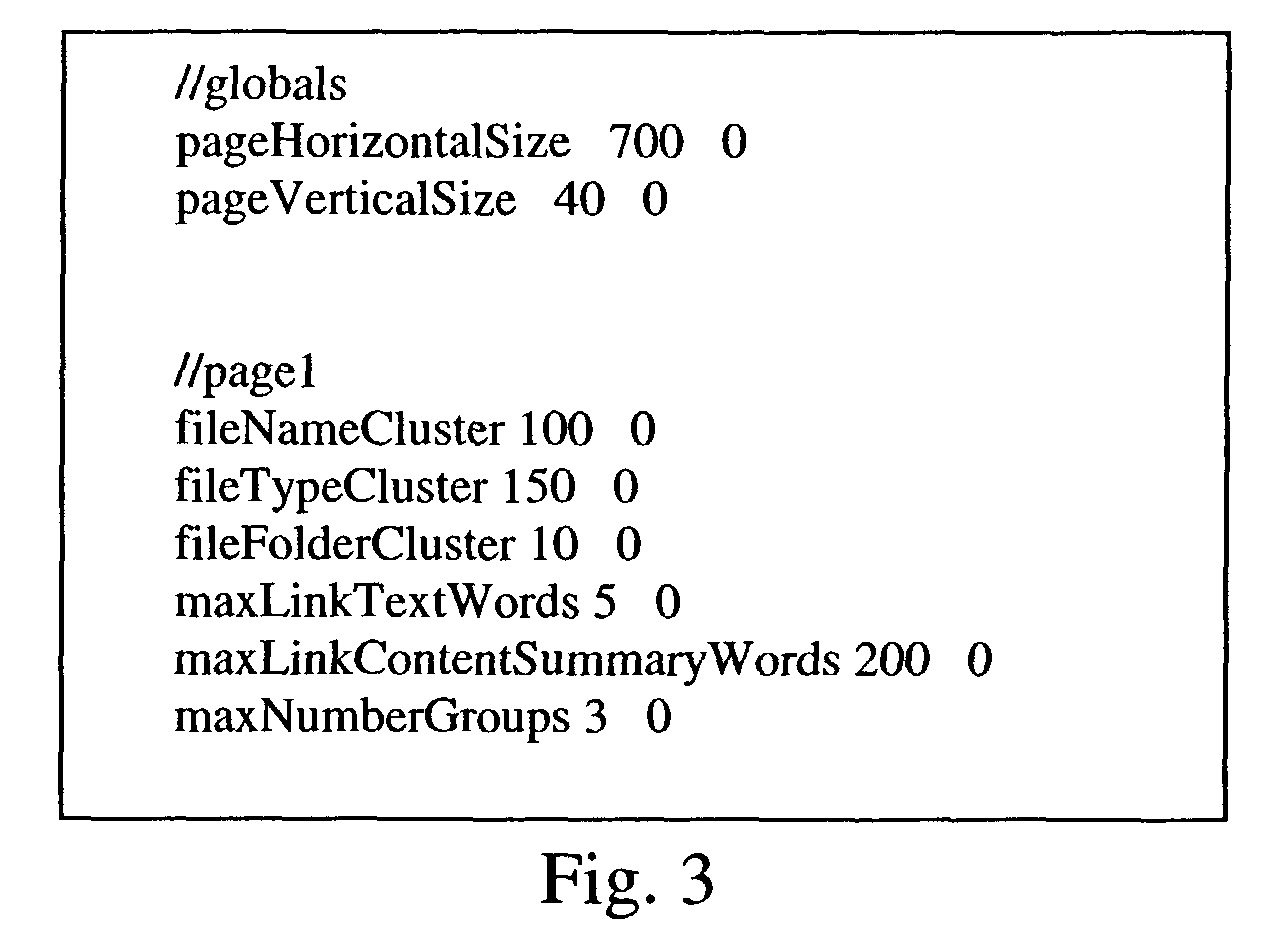Webpage generation tool and method
- Summary
- Abstract
- Description
- Claims
- Application Information
AI Technical Summary
Benefits of technology
Problems solved by technology
Method used
Image
Examples
Embodiment Construction
[0033]Preferred implementations of the invention provide the user with the ability to automatically generate a webpage or even an entire website (i.e., a collection of interrelated webpages, including hyperlinks between the pages), and easily maintain it. The layout of a webpage from certain files is generated automatically based on information such as (a) user preferences—e.g., specifying that all document files be on a “publications list” page, (b) company context—e.g., if the website is within a corporate intranet, the company may have rules as to how the websites should appear, (c) workgroup context—e.g., rules specific to a workgroup, and (d) meta-data or other information associated with the files, such as which files have been recently modified. This metadata may also include filesystem-attributes (e.g., directory structure, filenames, and location of the file in the filesystem) and interaction attributes (e.g., frequency of file usage, what application is used with the file,...
PUM
 Login to View More
Login to View More Abstract
Description
Claims
Application Information
 Login to View More
Login to View More - R&D
- Intellectual Property
- Life Sciences
- Materials
- Tech Scout
- Unparalleled Data Quality
- Higher Quality Content
- 60% Fewer Hallucinations
Browse by: Latest US Patents, China's latest patents, Technical Efficacy Thesaurus, Application Domain, Technology Topic, Popular Technical Reports.
© 2025 PatSnap. All rights reserved.Legal|Privacy policy|Modern Slavery Act Transparency Statement|Sitemap|About US| Contact US: help@patsnap.com



